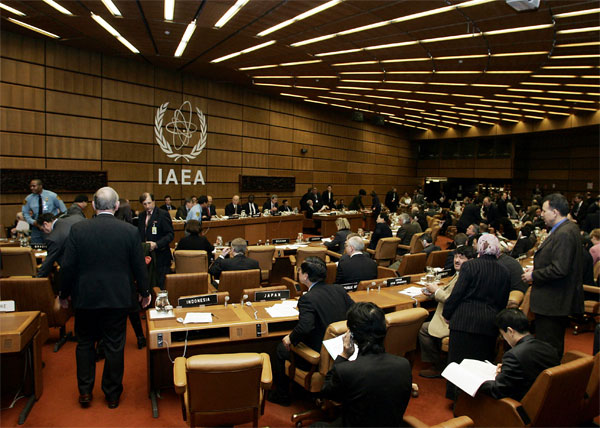
Reading the IAEA Report
 By Mary Kaszynski and Mitchell Freddura
By Mary Kaszynski and Mitchell Freddura
Every time the International Atomic Energy Agency issues a new report on Iran, news media and political pundits often end up misreading it. To counter the flawed interpretations that are sure to follow the latest report, ASP’s nuclear security team has an overview of what the report really says – and what it does not say.
What the report says
More centrifuges installed
The addition of over 1,000 new centrifuges at Fordow, the nuclear facility located near the city of Qom, increases Iran’s uranium enrichment capacity. However, the report notes that the new centrifuges are not yet operating, and experts say Iran is encountering problems with advanced enrichment technology.
Activity at the Parchin site still unclear
Cleanup – Recent satellite images show cleanup activity at the Parchin military complex, a suspected site for nuclear weapons-related research. “Iran has been conducting activities at that location that will significantly hamper the Agency’s ability to conduct effective verification.”
Access denied – “Iran has not provided the Agency with access to the location within the Parchin site to which the Agency has requested access.”
Talks have not led to an agreement
Iran and the IAEA meetings in Tehran (in May 2012) and Vienna (June and August 2012) but failed to agree on a structured approach to resolving outstanding issues.
“Despite the intensified dialogue between the Agency and Iran since January 2012, efforts to resolve all outstanding substantive issues have achieved no concrete results”
Conclusion: the IAEA is unable “to conclude that all nuclear material in Iran is in peaceful activities.”
“As Iran is not providing the necessary cooperation…the Agency is unable to provide credible assurance about the absence of undeclared nuclear material and activity in Iran, and therefore to conclude that all nuclear material in Iran is in peaceful activities.”
What the report does NOT say
The report does not say that Iran has a nuclear weapon.
In fact, the report says that Iran’s stockpile of 20% enriched uranium (the material that would likely be used if Iran decides to build a bomb) remains virtually unchanged from the May IAEA report. Iran currently less than half the amount of 20% enriched uranium needed to build a nuclear weapon.
Experts estimate that building one crude nuclear weapon would take Iran several months; designing and building a delivery vehicle would take even longer.
Nor does the report say that Iran is trying to build a nuclear weapon.
The IAEA reports on Iran’s current capabilities and past activities but does not draw conclusions about Iran’s intentions. U.S. intelligence officials continue to assess that Iran has not yet decided to build a nuclear weapon.
Things to keep in mind
A military strike would only delay Iran’s nuclear the program, and could be counterproductive.
Many U.S. leaders, including Secretary of Defense Leon Panetta, have noted that a military strike could not eliminate Iran’s nuclear program, only delay it by one to three years.
Moreover, as former Defense Secretary Robert Gates noted, a military strike could be counterproductive: “A military solution, as far as I’m concerned…will bring together a divided nation. It will make them absolutely committed to obtaining nuclear weapons. And they will just go deeper and more covert,” Gates said at a 2010 event.
Sanctions are having an effect.
Economic sanctions against Iran are beginning to bite. Iran’s oil exports dropped 52 percent this year, a loss of $133 million per day. The inflation rate has climbed to over 20 percent.
Sanctions played a large role in convincing Iran to return to discussions with the P5+1 earlier this year. Continued economic pressure – and the possibility of lifting or postponing sanctions if Iran makes concessions – could be key in future negotiations.
Diplomacy is still the best option.
No one expects the diplomatic track to be fast or easy. In fact, negotiations will be difficult and will take time. But there is there is still time for negotiations to succeed. And continuing to engage Iran is the best way to avoid a potentially disastrous military conflict and achieve a long-term solution to the nuclear crisis.






[…] international sanctions sinking their teeth further into the Iranian economy’s health and a new IAEA report on Iran’s nuclear program, the NAM summit was both an exercise in hospitable camaraderie and a […]
[…] Reading the IAEA Report […]
[…] Given Hadley’s previous job as National Security Advisor to former President George W. Bush, his military and diplomatic policy options paper on Iran is well worth the long read. Hadley’s timely report comes amidst increasing tensions in the Middle East and in the wake of a recent IAEA report on Iran’s nuclear program. […]